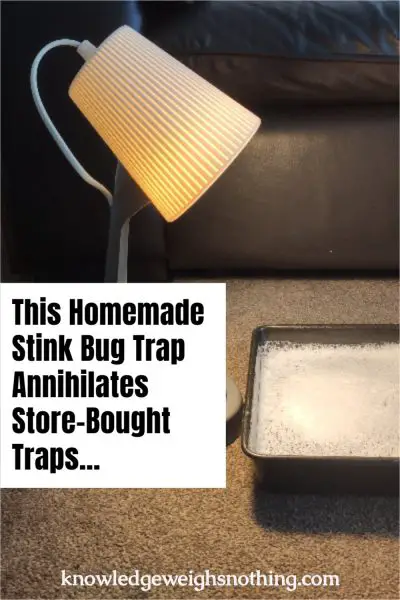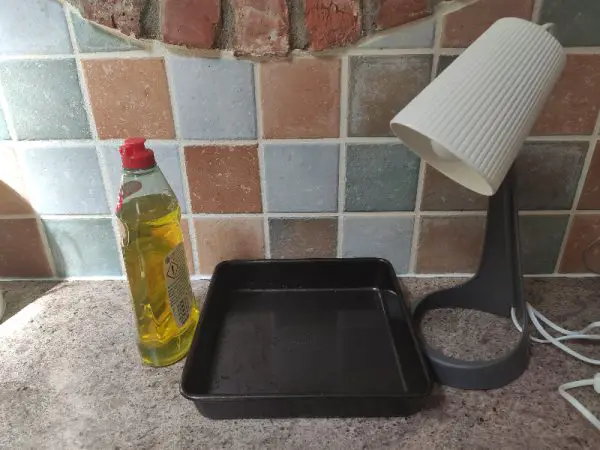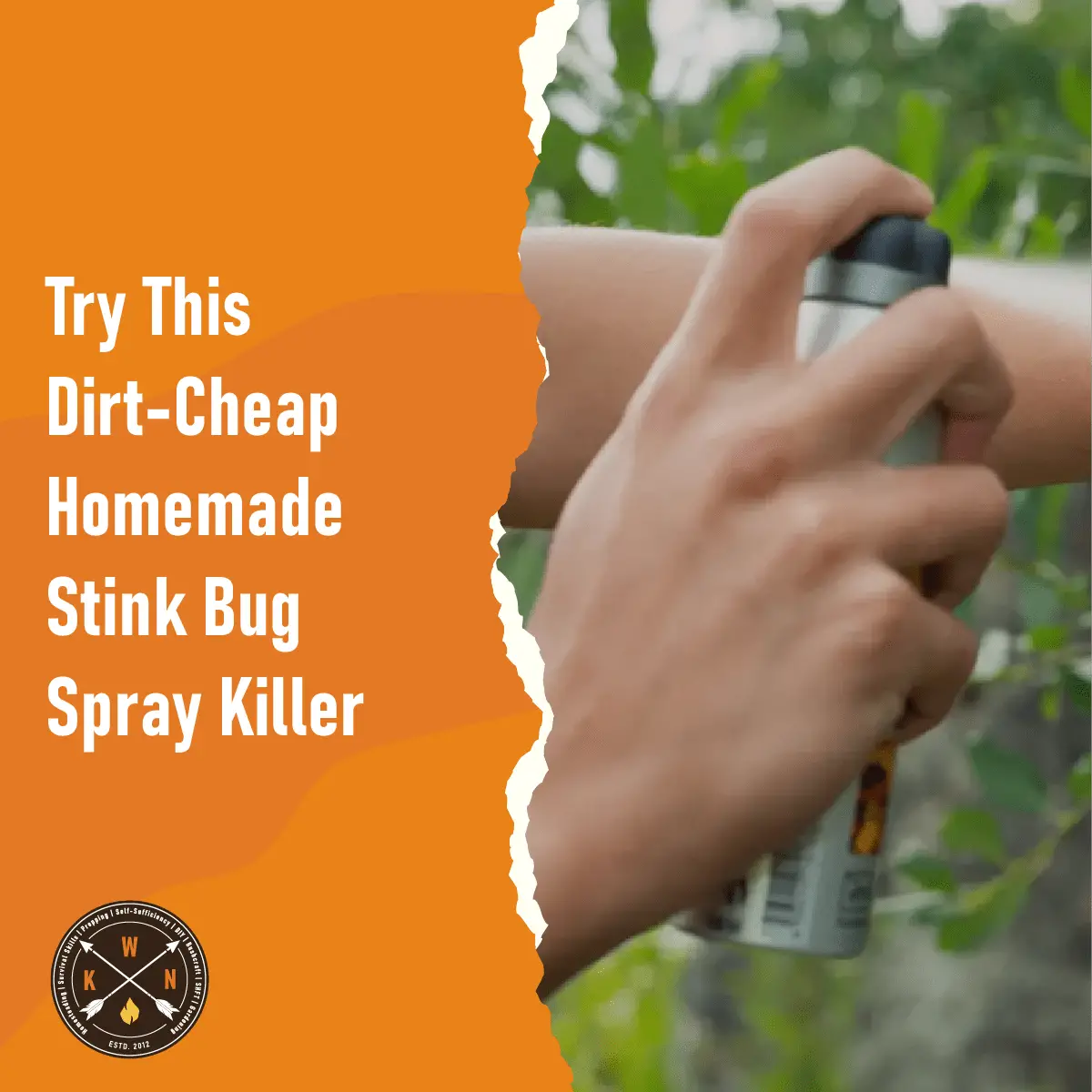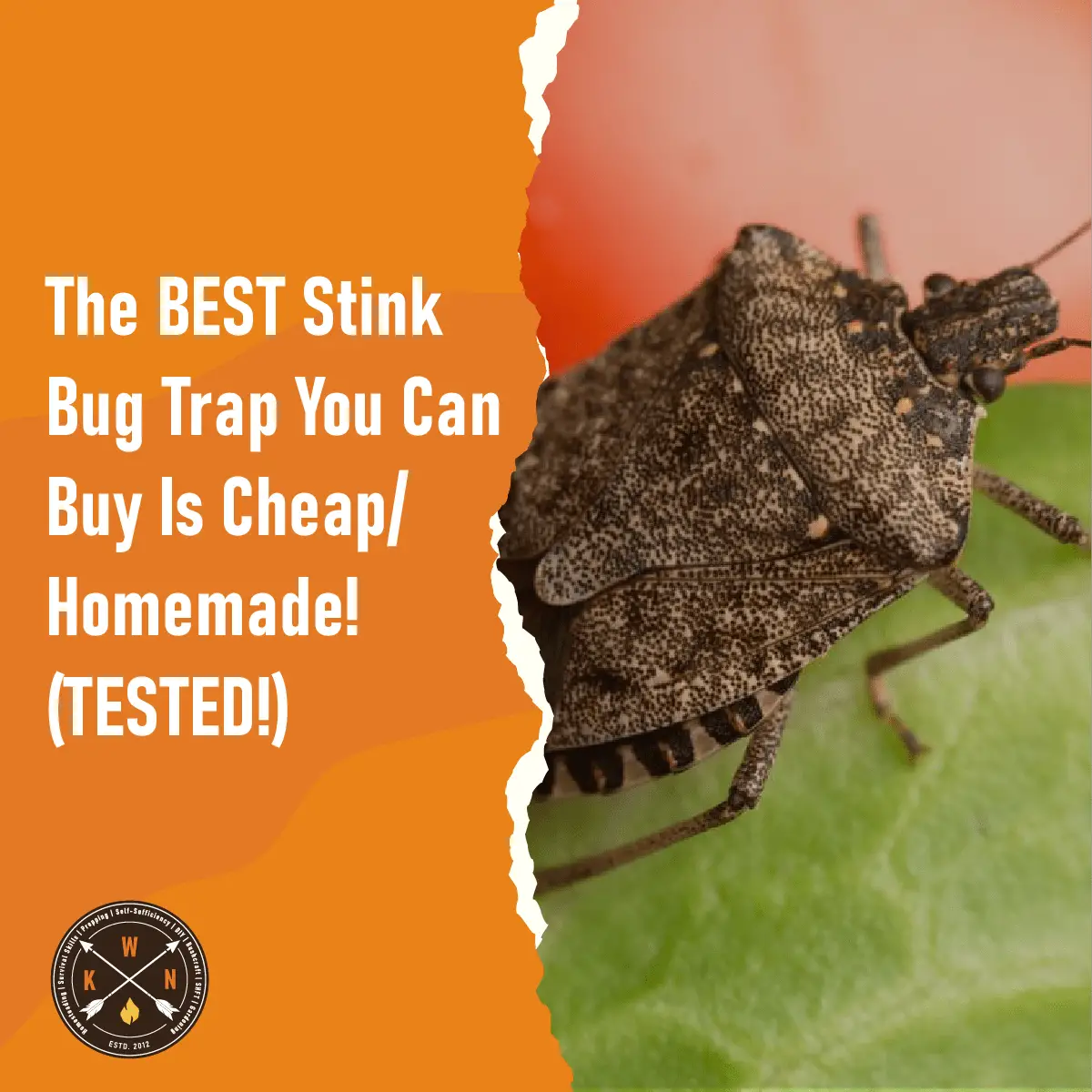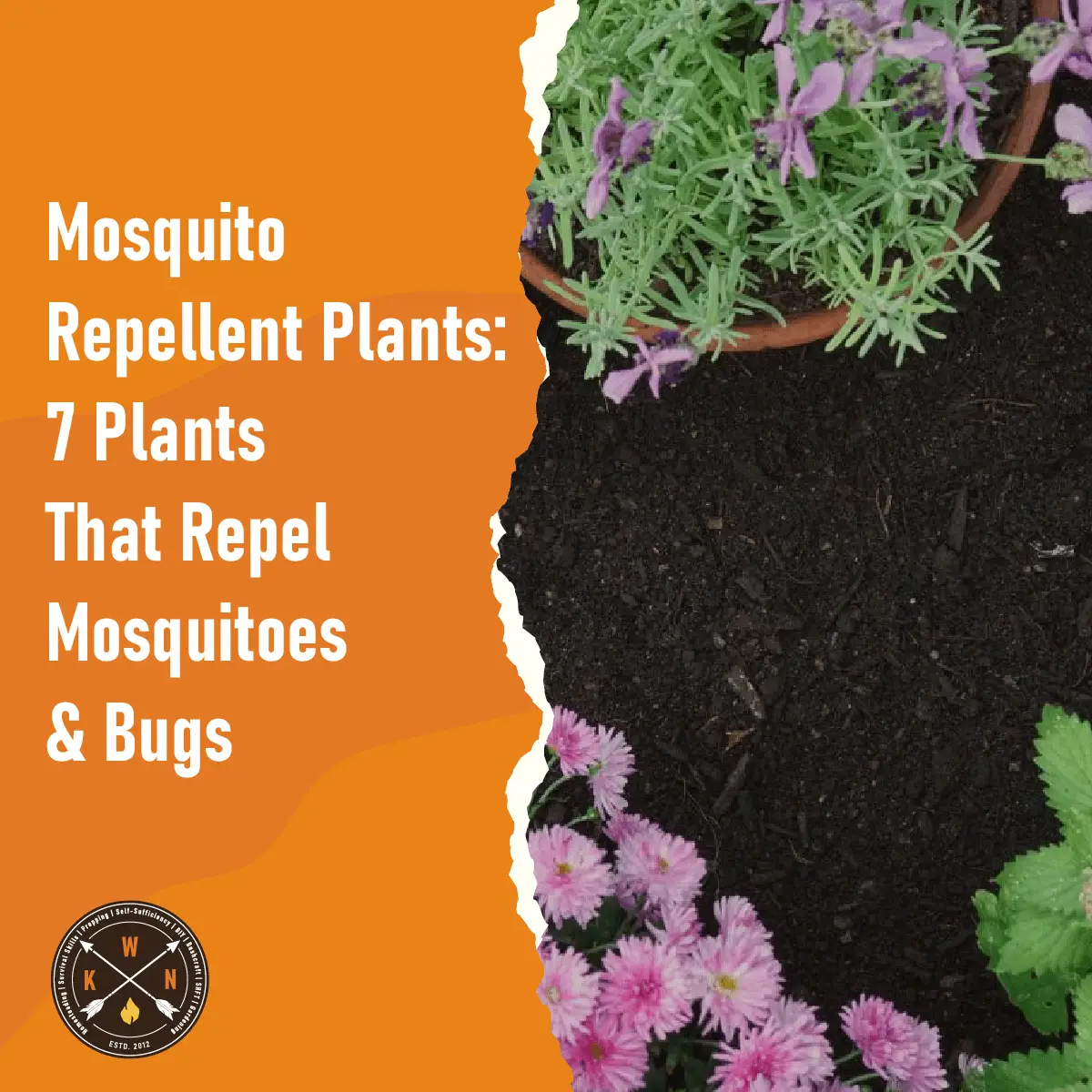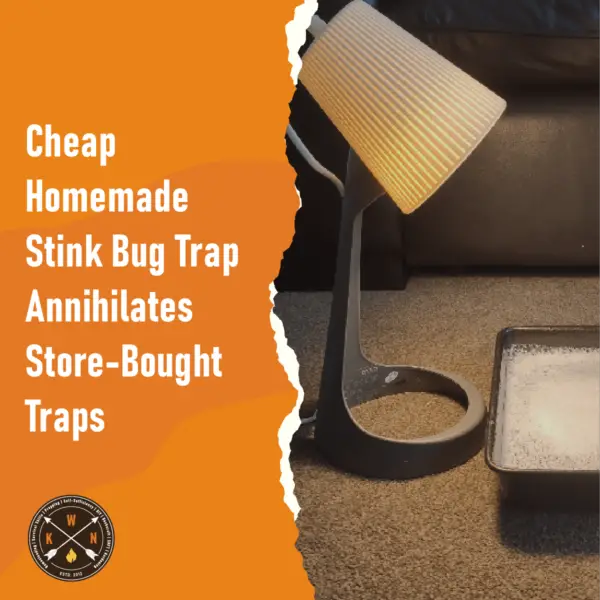
People spend lots of money on professional stink bug traps and stink bug sprays, but the question is — do they need to spend all this money to get rid of stink bugs? Spoiler alert — no they don’t! And researchers from Virginia Tech proved it by testing expensive commercial traps with a cheap homemade stink bug trap similar to the one below.
Table of Contents
ToggleThe Homemade Stink Bug Trap = 14 Times More Effective
Studies by the Virginia Tech, College of Agriculture & Life Sciences have found that the best way to get rid of stink bugs is to create your own DIY homemade stink bug trap.
A study conducted over 16 homes plagued with stink bugs asked the homeowners to try out a couple of different stink bug traps to see which one removed the stink bug infestation fastest.
It was determined that the homemade stink bug trap eliminated 14 times more stink bugs from homes than any purchased solution, some of which can cost up to $50. The homemade stink bug trap is made from just a roasting/baking tray, a desk lamp and some dish soap!
Not only was this cheap DIY stink bug trap better than the store-bought ones, if you have a roasting/baking tray or similar and a desk lamp, then this DIY stink bug trap costs nothing. It is 100% free. It can also be reused over and over!
It just goes to show that homemade and home remedies etc can be highly effective and save you a ton of money.
How to Create a Homemade Stink Bug Trap
You will need:
- A baking tray, foil roasting tin (or similar).
- A desk lamp
- Some water and dish soap (floral scent works best)
Method:
- Place the roasting tray in the desired location and then fill it with water.
- Add some dish soap and swirl it around to create bubbles.
- Put a desk light over the tray and turn it on.
- The smell of the dish soap and the light will attract the stink bugs into the tray where they will drown.
- Empty the tray daily and refresh.
Warning –– be careful where you place this trap as we have water and electricity in close proximity. Do not place this homemade trap anywhere where it might be disturbed by children or pets. You do not want the lamp being knocked into the tray of water. You also don’t want your dog eating a tray of dead stink bugs and dish soap!
Below is a short video from Virginia Tech showing how to make this simple trap.
Why Does This DIY Trap Work?
Stink bugs are generally attracted to floral scents. They lay their eggs around crops or fruits, allowing the hatchlings to eat immediately after hatching. This creates much of the problem in gardens or on farmland. The lovely floral scent of your dish soap will attract the bugs in the same way.
We all know that bugs also love light. That’s why you’ll always see bugs on your window at nighttime; they’re trying to get as close to the light as possible. The light and heat coming from the lamp you place above the water will set up the ideal egg-laying and feeding environment artificially.
The bugs will crawl in thinking that they’ve found a nice sunny spot with plenty of food – ideal for egg-laying and feeding. Once the bug reaches the water, they’ll be attracted to the reflection of the light and hop in – bugs can’t swim. You’ll end up with a surface covered in stink bugs that could not get out of the water, and you can empty the tray every day to start afresh.
Homemade Stink Bug Trap Pros
- Cost-effective – Making your own DIY stink bug trap will cost you next to nothing as it’s created purely from things that you should have around your home already.
- Pesticide-free – Most stink bug solutions that you can buy use pesticides to get rid of the bug problem. However, using this home remedy won’t damage your furniture and isn’t harmful to any pets or small children if they are kept away whilst the trap is in use.
- Environmentally Friendly – Making your own stink bug trap is environmentally friendly in almost every way imaginable. You’re recycling the items that you currently have in your home, so there are no resources wasted in more manufacturing. You’re also using products that aren’t bad for the environment, removing pesticides. Additionally, you can reuse the same trap over and over!
- No crushing involved – The main reasons for the excessive stink coming from stink bugs are either; the bug is feeling threatened and uses the stink as a defence mechanism or, the bug is crushed in the killing process, and the stink is released accidentally. Using this homemade method means that the stink bugs don’t get stressed and aren’t crushed, so the smell won’t be as intense.
The Cons
- Only for home use – Going for the DIY dish soap stink bug trap will work wonders for removing stink bugs from your home. However, it’s not going to work too well outdoors.
- Doesn’t target eggs – Although the homemade traps are great for removing the bug problem, they don’t target the eggs, so you may need to look at creating a few traps around your home to discourage the laying of eggs and capture the stink bugs before they lay.
- Constant light is required – To effectively capture all of those bugs, you’ll need to make sure the light is on at all times. This might have implications for your electricity bill, but it also means you can’t really put traps in areas where you’ll be sleeping. See the alternative homemade stink bug trap option below.
Another DIY Stink Bug Trap Worth Trying…
A few years back we published a post/tutorial showing how to make a DIY stink bug trap out of s soda bottle and a cheap LED light.
This bottle trap works on much the same principle as this roasting tray stink bug trap, but it has two main benefits — firstly were not mixing water and electricity like with the roasting trap and the desk lamp, so it is safer in that respect. Secondly, the soda bottle trap can pretty much be placed in any location, indoors and outside, as the light source is battery powered.
You might want to check out this soda bottle stink bug trap post and consider which of the two homemade traps will work best for you. You can of course try both!
Because we are obsessed with getting rid of stink bugs, we have also done a post about stink bug home remedies for use in the home and garden. Here is a link to a homemade stink bug killing spray too!
